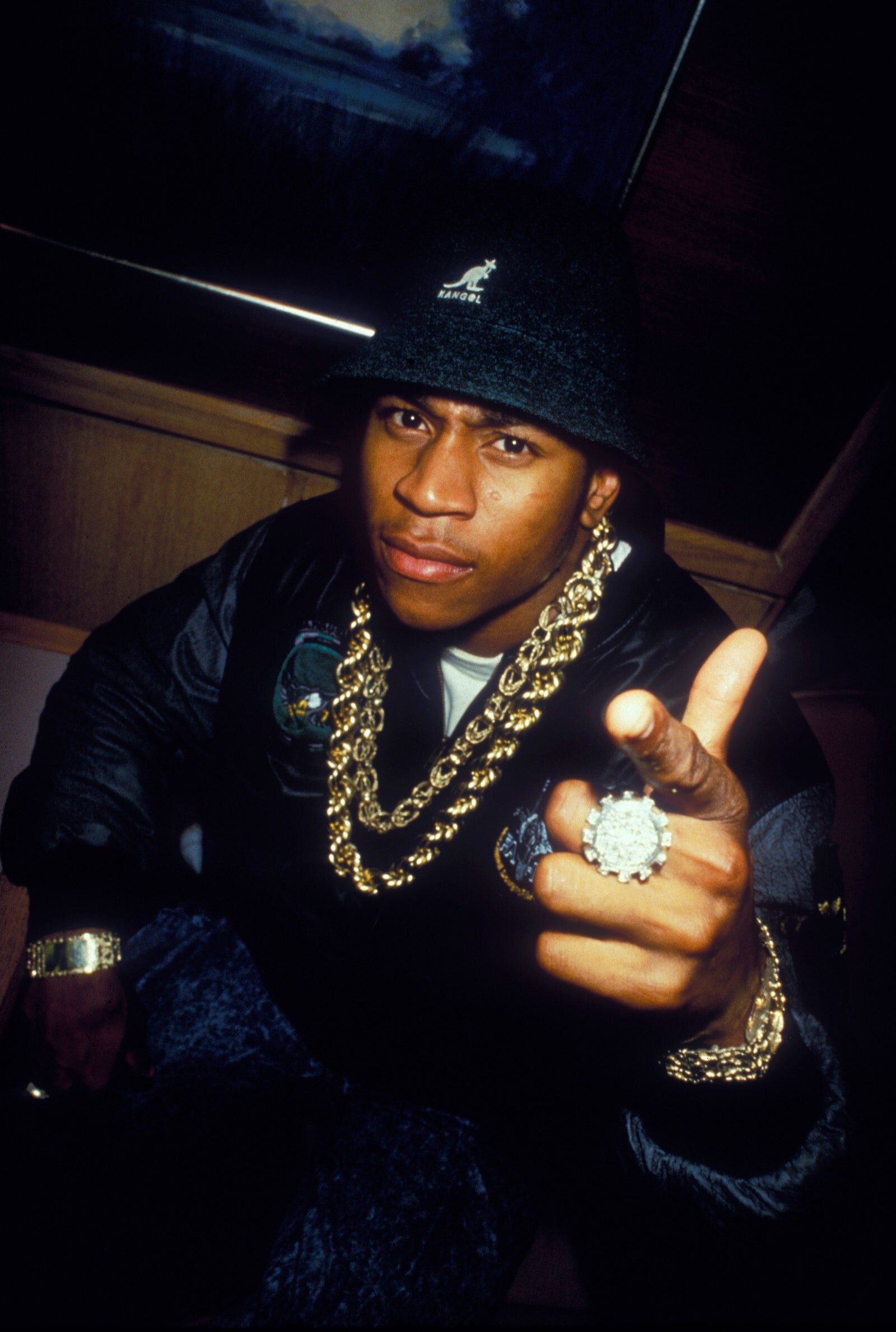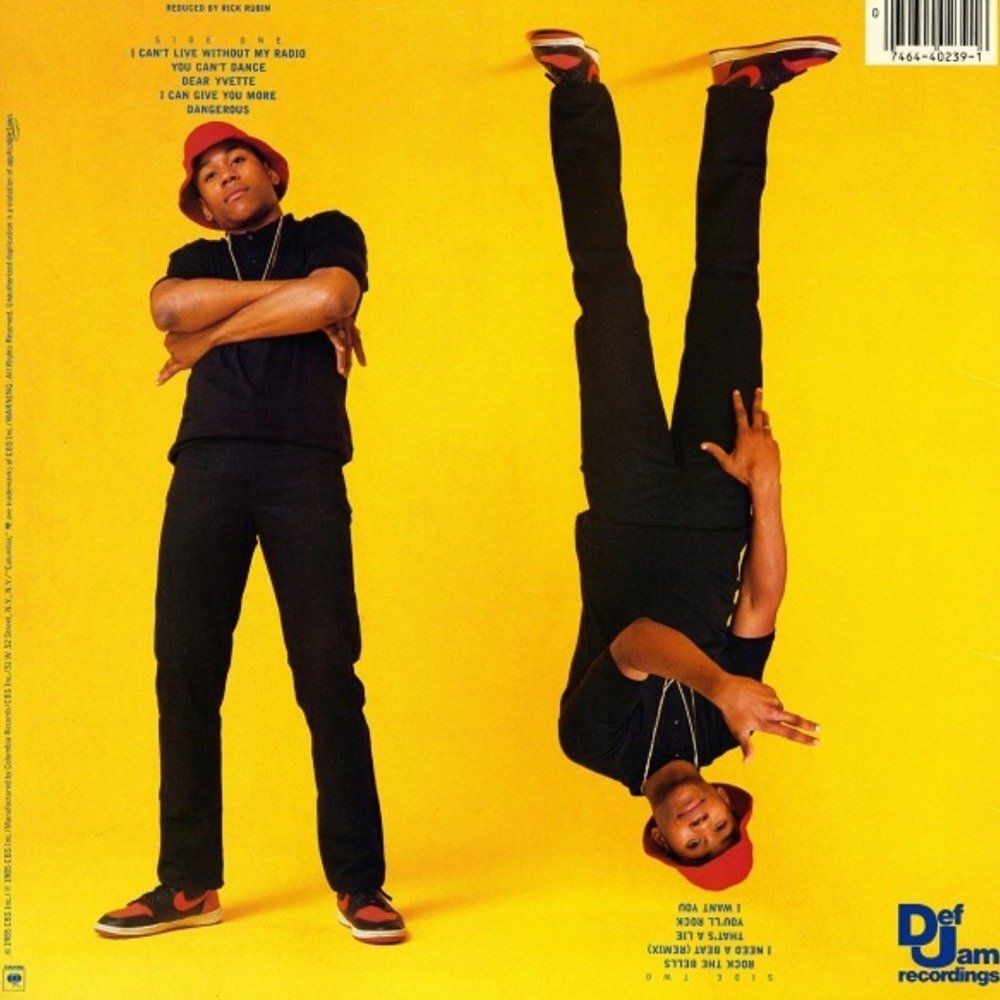LL Cool J's Iconic Style: Kangols & Chains (Then & Now)
Does a hat and a chain truly define an icon? For LL Cool J, the answer resonates with a resounding yes, his Kangol hats and dookie chains being more than mere accessories; they are emblems of an era, a testament to a style that transcended music and defined a generation.
Born James Todd Smith, LL Cool J's ascent to hip-hop royalty was as much about his lyrical prowess as it was about his carefully crafted image. In the nascent years of rap, visual presentation was paramount. It wasn't enough to just have the rhymes; you had to have the look. And LL Cool J understood this implicitly. He wasn't just selling music; he was selling a lifestyle, an attitude, a brand. The Kangol hat, perched just so, became his crown. The dookie chain, heavy and gleaming, became his scepter. These weren't random choices; they were deliberate, calculated moves that solidified his position as a trendsetter and a cultural icon.
The Kangol hat, initially popularized in the 1930s, found a new audience in the burgeoning hip-hop scene of the 1980s. LL Cool J's adoption of the Kangol wasn't simply a matter of following a trend; he personalized it, making it intrinsically linked to his persona. Whether it was a Bermuda Casual or a Spitfire, the Kangol became synonymous with LL Cool J's cool, confident swagger. It wasn't just headwear; it was a symbol of authenticity, of street credibility, of being in the know. The hat signaled that LL was not just a rapper, but a representative of a culture, a voice for the voiceless.
- Claudia Heffner Peltz Model Wife Philanthropist Full Story
- Khabib Nurmagomedovs Wife All About Patimat 2024 Update
And then there was the dookie chain. In an era of excess and ostentation, the dookie chain was the ultimate status symbol. Heavy, gold, and often customized with names or symbols, the dookie chain screamed success. For LL Cool J, the dookie chain wasn't just jewelry; it was a declaration of independence, a symbol of overcoming adversity, a tangible representation of the dreams realized. It was a reminder that from humble beginnings in Queens, he had ascended to the pinnacle of success. The chain wasn't just about bling; it was about empowerment.
The impact of LL Cool J's style choices extended far beyond the music industry. He influenced fashion trends, inspired countless imitators, and helped to shape the visual identity of hip-hop culture. His look was emulated by fans around the world, solidifying his status as a global icon. From urban street corners to suburban malls, the Kangol hat and dookie chain became ubiquitous symbols of hip-hop cool.
Even as musical trends shifted and hip-hop evolved, LL Cool J's iconic style remained remarkably consistent. While other artists experimented with different looks, LL Cool J stayed true to his roots, continuing to rock the Kangol and the dookie chain well into the 1990s and beyond. This unwavering commitment to his signature style reinforced his image as a timeless icon, a living legend who transcended generations.
- Leo Virgo Cusp Are You One Traits Compatibility More
- Frank Gallaghers Death Exploring The Shameless Finale Legacy
However, the impact of LL Cool J's fashion choices goes beyond mere aesthetics. The Kangol hat and the dookie chain became potent symbols of African American identity and cultural pride. In a society that often marginalized and stereotyped black men, LL Cool J's confident embrace of his own style was a powerful statement of self-affirmation. He wasn't conforming to mainstream norms; he was creating his own, and in doing so, he inspired countless others to do the same.
His impact can be seen in the evolution of hip-hop fashion, from the oversized tracksuits and gold chains of the early days to the designer labels and luxury brands of today. While the specific trends may have changed, the underlying principle remains the same: hip-hop artists use fashion as a way to express themselves, to assert their individuality, and to challenge societal norms. And LL Cool J played a pivotal role in establishing this tradition.
The beauty of LL Cool J's style lies in its simplicity and accessibility. The Kangol hat and the dookie chain were relatively affordable items that could be easily obtained, making them accessible to a wide range of people. This accessibility contributed to their widespread popularity and helped to democratize hip-hop fashion. It wasn't just about wearing expensive clothes; it was about putting your own spin on a classic look and making it your own.
It's important to acknowledge that LL Cool J's iconic style wasn't created in a vacuum. He was part of a larger cultural movement that was transforming American society. Hip-hop emerged as a powerful force in the 1980s, giving voice to marginalized communities and challenging the status quo. LL Cool J, along with other hip-hop pioneers, used their music and their fashion to express their experiences, their frustrations, and their hopes for the future.
Today, LL Cool J remains a respected figure in the hip-hop community and a cultural icon for millions around the world. His music continues to inspire and entertain, and his iconic style continues to be celebrated and emulated. The Kangol hat and the dookie chain may seem like simple accessories, but they represent something much larger: a legacy of creativity, innovation, and self-expression.
The significance of his style is also rooted in the context of the era. The 1980s were a time of significant social and political upheaval, particularly for African Americans. Hip-hop emerged as a powerful voice for a generation that felt ignored and marginalized. LL Cool J's style, with its emphasis on authenticity and self-expression, resonated deeply with young people who were searching for a way to define themselves in a rapidly changing world.
Moreover, his style choices were a direct challenge to the prevailing norms of beauty and fashion. In a society that often favored Eurocentric standards, LL Cool J embraced his own identity and celebrated his African American heritage. He showed young people that it was okay to be different, that it was okay to express themselves in their own way, and that their voices mattered.
LL Cool J's influence can also be seen in the way that hip-hop artists have used fashion to build their brands and create a sense of identity. From Run-DMC's Adidas tracksuits to Public Enemy's militant style, hip-hop artists have always understood the power of visual presentation. LL Cool J helped to pave the way for these artists by demonstrating that fashion could be a powerful tool for self-expression and cultural commentary.
Furthermore, his enduring appeal speaks to the timelessness of his style. While fashion trends come and go, LL Cool J's iconic look has remained remarkably consistent over the years. This consistency has helped to solidify his status as a legend and has made him a role model for generations of young people. He represents a sense of authenticity and integrity that is often lacking in the world of entertainment.
The key to understanding LL Cool J's impact is to recognize that his style was not just about the clothes he wore or the accessories he sported. It was about the attitude he projected, the confidence he exuded, and the message he conveyed. He embodied a spirit of self-determination and a belief in the power of dreams. He inspired young people to believe in themselves and to pursue their goals, regardless of the obstacles they faced.
In a world that is often obsessed with superficiality and fleeting trends, LL Cool J's iconic style serves as a reminder of the importance of authenticity, self-expression, and cultural pride. He is a true icon who has left an indelible mark on the world of music, fashion, and culture.
The legacy of LL Cool J's style extends beyond mere fashion trends. It speaks to the power of self-expression, the importance of cultural identity, and the enduring influence of hip-hop culture. His Kangol hats and dookie chains are more than just accessories; they are symbols of a generation, a testament to a style that transcended music and defined a cultural movement.
Ultimately, LL Cool J's iconic style is a reflection of his own personal journey. He rose from humble beginnings to become one of the most successful and influential artists of his generation. His style is a symbol of his success, his resilience, and his unwavering commitment to his own vision.
His influence on fashion continues to be felt today. Designers regularly draw inspiration from the hip-hop styles of the 1980s and 1990s, and LL Cool J's name is often invoked as a reference point. His legacy is secure, and his impact on popular culture will continue to be felt for generations to come.
The reason his style is so impactful also has to do with the genuine nature of it, LL was being himself and not trying to be something else and that is something people appreciate and respect.
His music has spanned generations and he has always stayed relevant throughout the years which also helps continue to reinforce his iconic status.
But it isn't just the Kangol hats and the dookie chains, it's also the track suits, the sneakers and even just the way he carried himself that helped solidify the overall image.
LL also understood the importance of being a role model, and in his own way, he was. He showed young people that it was possible to achieve their dreams, regardless of their background or circumstances. He inspired them to be confident, to be creative, and to be themselves.
There were plenty of artists that have come and gone but only few have achieved the level of icon status that LL Cool J has and will continue to have for many more years to come.
In conclusion, LL Cool J's iconic style is more than just a collection of clothes and accessories. It is a reflection of his own personal journey, a symbol of his success, and a testament to the power of self-expression.
| Category | Information |
|---|---|
| Personal Information | |
| Full Name | James Todd Smith |
| Stage Name | LL Cool J (Ladies Love Cool James) |
| Birth Date | January 14, 1968 |
| Birth Place | Bay Shore, New York, USA |
| Nationality | American |
| Spouse | Simone Smith (married in 1995) |
| Children | Najee Laurent Todd Eugene Smith, Italia Smith, Samaria Leah Wisdom Smith, Nina Simone Smith |
| Career Information | |
| Occupation | Rapper, Actor, Record Producer, Entrepreneur |
| Years Active | 1984 Present |
| Genre | Hip Hop |
| Label(s) | Def Jam Recordings |
| Associated Acts | Def Jam artists, various collaborators |
| Professional Highlights | |
| Notable Albums | Radio (1985), Bigger and Deffer (1987), Mama Said Knock You Out (1990), Mr. Smith (1995) |
| Notable Singles | "I Need Love", "Going Back to Cali", "Mama Said Knock You Out", "Hey Lover" (featuring Boyz II Men) |
| Acting Roles | "In the House", "Any Given Sunday", "Deep Blue Sea", "NCIS: Los Angeles" |
| Awards & Recognition | Multiple Grammy Awards, MTV Video Music Awards, NAACP Image Awards, Star on the Hollywood Walk of Fame |
| Business Ventures | Todd Smith Brand (clothing line), Rock the Bells Festival (founder) |
| Website | LL Cool J Official Website |
- Asma Assad From First Lady To Exile The Assad Story
- Taurus Scorpio Friendship Compatibility Challenges More

Peep Young LL Cool J's Iconic Style During the 80s & 90s — ZEITGEIST

Peep Young LL Cool J's Iconic Style During the 80s & 90s — ZEITGEIST

Peep Young LL Cool J's Iconic Style During the 80s & 90s — ZEITGEIST